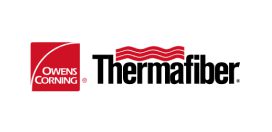Moisture accumulation within a building structure can cause problems such as water stains, ice damage, peeling paint, wood deterioration, mold and mildew. Liquid water forms when water vapor in the building comes in contact with a surface that has a temperature lower than the dew point of the air.
There are three basic ways to minimize potential water vapor condensation problems in buildings:
- Provide sufficient ventilation to reduce excessive water vapor build-up within the building
- Ventilate building spaces so that excessive water vapor is dissipated to the outdoor air
- Use vapor retarders to limit water vapor transmission into building cavities
Moisture control strategies
Ventilation and circulation with outdoor air are the major moisture control strategies to remove water vapor from a building structure and reduce the amount of moisture within the building that is able to condense. Vapor retarders slow the migration of water vapor from areas with higher moisture levels into areas with cold surfaces in the building. Cold surfaces are typically found inside walls, roof/ceilings and areas below floors.
Addressing attic ventilation
NAIMA recommends the following widely used ventilation strategies: Provide ventilation for enclosed attic space to the outside with ventilating openings protected against the entry of rain and snow.
The total net free ventilating area shall be no less than 1/150 of the attic floor area if no vapor retarder is used, or 1/300 of the attic floor area when a vapor retarder having a perm rating of 1 or less is used.
Steps to Determine Attic Ventilation Needs
- Measure the area to be vented.
- Divide this number by either 150 (no vapor retarder) or by 300 (vapor retarder in place).
- Multiply by the appropriate factor from Table 1 (below) to learn the total gross vent area needed.
- Determine where vents will be located. Typically, half of the ventilation area is located at the eave and half at either the peak of the roof using a ridge vent or at the peak of the gable using gable vents.
Note: Cathedral, flat and hip roof/ceilings with vapor retarders need a vent area of 1 sq. ft./300 sq. ft. of ceiling. Total ventilation may be achieved by placing half of the required vent area at each eave. Without a vapor retarder, the vent area should be doubled. The most effective ventilation is provided by a combination placement of the vents with 50 percent of the area at the roof peak and 50 percent at the soffits or eaves.
Accommodating Obstructions
| Type of Covering | Area of Opening |
|---|---|
| 1 ⁄4” hardware cloth | 1 times required net free area |
| 1 ⁄4” hardware cloth and rain louvers | 1.25 times required net free area |
| 1 ⁄8” mesh screen and rain louvers | 2.25 times required net free area |
| 1 ⁄16” mesh screen | 2 times required net free area |
| 1 ⁄16” mesh screen and rain louvers | 3 times required net free area |
Caution should always be exercised to assure that vents are not obstructed. Blocking or baffles should be used at the eaves to keep insulation material away from soffit/eave vents and provide a minimum 1” free airspace between the roof deck and the insulation.











